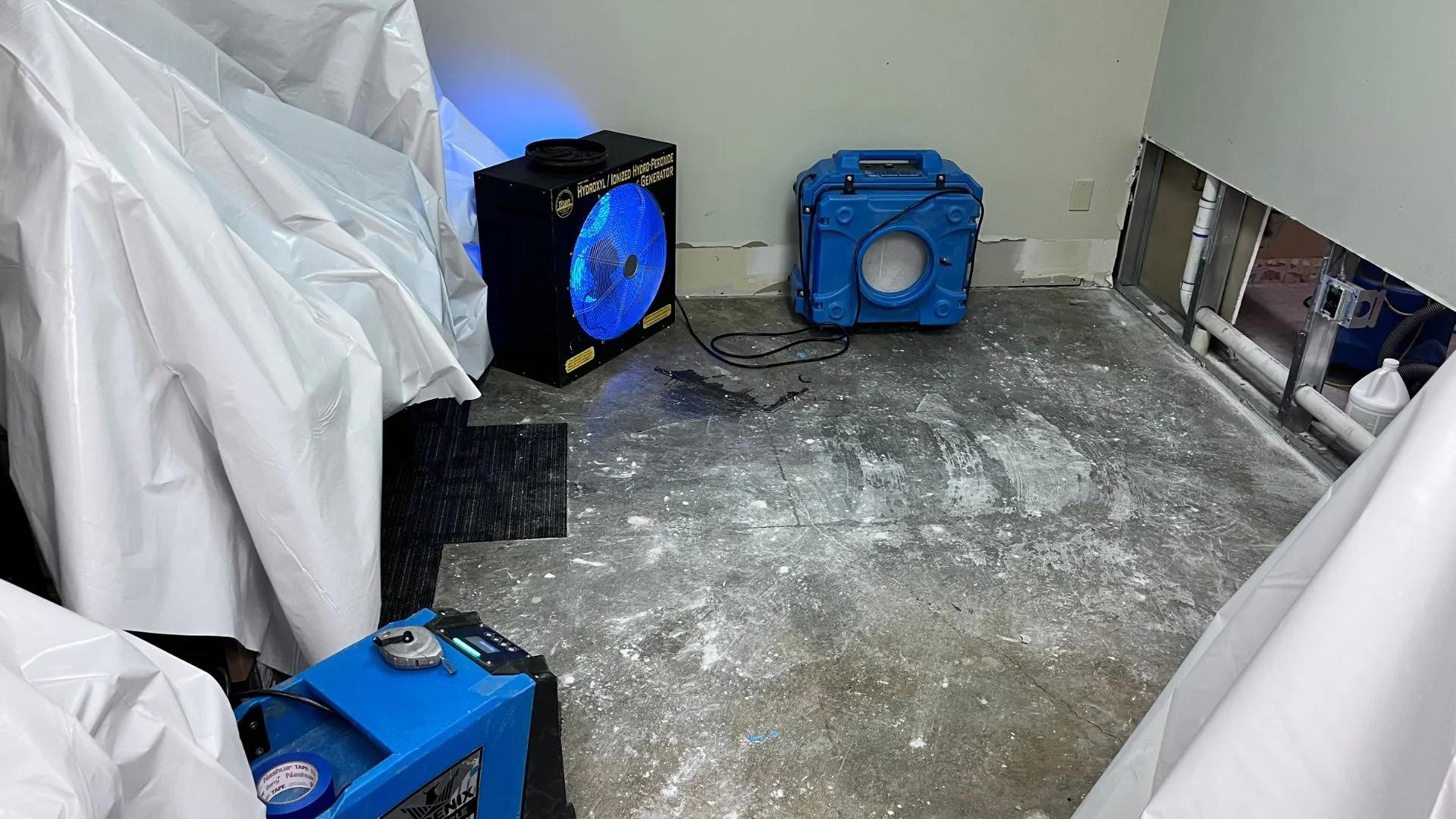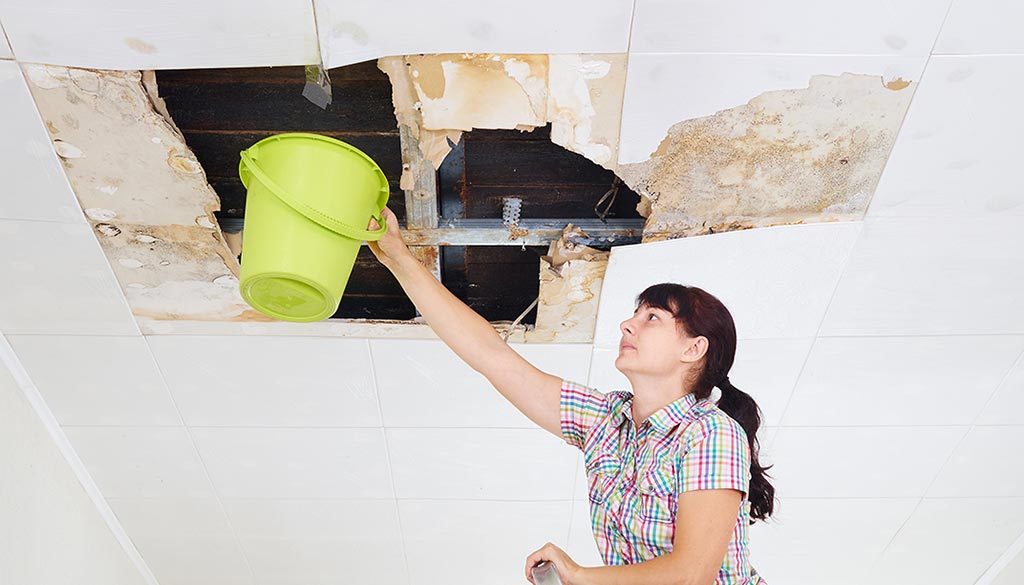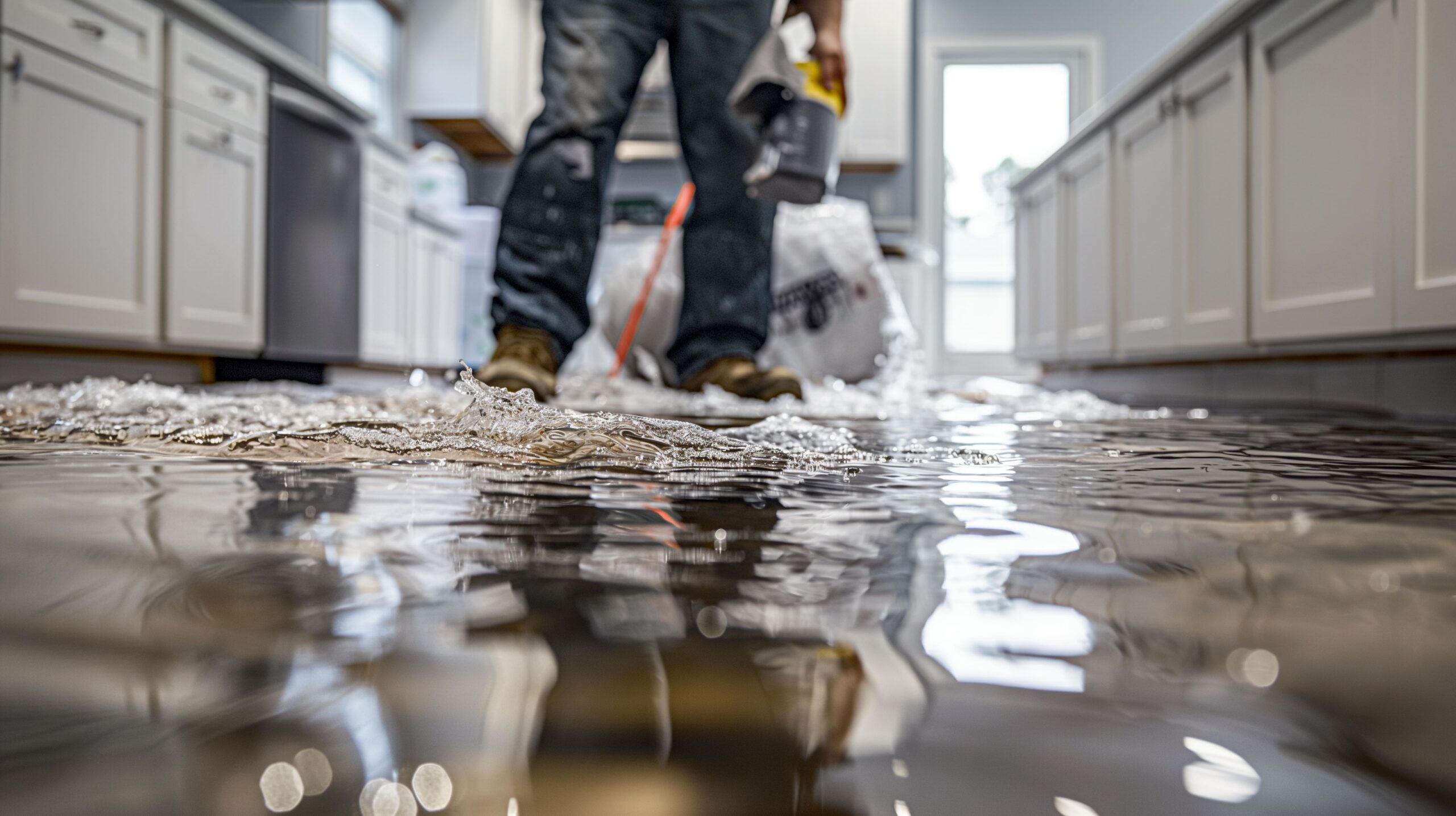The Total Guide to Navigating the Difficulties of Water Damage Reconstruction
Water damages can strike suddenly, leaving you with a challenging mess to tidy up. Understanding the causes and examining the level of the damage is vital. Your immediate actions can make a considerable distinction in the outcome. However what steps should you take first, and exactly how can you ensure you're protected progressing? The responses exist in a detailed strategy to restoration that every property owner need to know.

Comprehending the Root Causes Of Water Damage
Water damages can strike all of a sudden, typically leaving you clambering to deal with the consequences. Recognizing the sources of water damages is necessary for prevention. Smoke Damage Restoration. Usual perpetrators include leaking roof coverings, ruptured pipelines, or malfunctioning devices. You could likewise come across issues with your pipes systems, like stopped up drains pipes or sewage backups, which can cause considerable water intrusion. Weather-related cases, such as heavy rainfalls or flooding, can likewise damage your residential property. Additionally, the age of your home plays a function; older structures often have wearing away products that are much more susceptible to leaks and damage. Also minor concerns, like condensation from cooling and heating systems, can collect and cause troubles with time. By identifying these potential resources of water damages, you can take positive steps to safeguard your home and lessen future threats. Staying notified will empower you to identify early indicators and act swiftly when troubles emerge
Assessing the Degree of the Damages
Examining the level of the damage is vital for determining the proper reaction when you've recognized a prospective water damages issue. Begin by evaluating the affected areas thoroughly. Seek noticeable indicators like water spots, distorted floors, or peeling off paint. Don't forget to examine covert spots, such as behind wall surfaces or under carpets, where dampness might linger.Next, identified the sort of water entailed-- clean, grey, or black-- because this impacts the intensity of the damages and necessary remediation steps. Make use of a wetness meter to determine moisture levels in floors and walls, helping you recognize sticking around wetness that could cause mold and mildew growth.Document whatever with pictures and notes, as this information can be essential for insurance claims. By accurately assessing the damage, you'll be much better furnished to select the right repair technique and prevent more issues down the line.
Immediate Tips to Take After Water Damages
After experiencing water damage, the initial point you need to do is assess the scenario meticulously. Prioritizing your safety is vital, so see to it the area is secure before taking any more actions. Do not fail to remember to record everything completely, as this will be very important for insurance cases and repair initiatives.
Assess the Damage
Examining the damages swiftly is essential for lessening the influence of water invasion. Begin by examining the impacted locations to establish the extent of the water damage - Water Damage Cleanup. Search for noticeable indicators like drenched carpets, distorted floorings, and stained wall surfaces. Check for hidden water, also, especially in crawl areas and behind home appliances. Utilize a dampness meter if you have one, as it can aid pinpoint locations that require interest. Record everything with notes and pictures; this will certainly work for insurance policy claims. Remember to examine your possessions as well-- furniture and individual products may require professional cleaning or disposal. By understanding the degree of the damages, you can make informed choices concerning the following action in the repair process
Focus On Safety First
Comprehending the extent of water damage is just the start; your security comes. Before you get in a water-damaged location, ensure to shut off the power and gas supply to avoid any kind of risks. Wear safety equipment, consisting of handwear covers and boots, to protect yourself from contaminants. Be careful of architectural instability-- ceilings, floorings, or walls might have deteriorated. If the water is coming from a sewage source, avoid contact and telephone call experts for aid. Keep animals and children far from the damaged area. If you scent gas or see electrical sparks, leave quickly. Bear in mind, prioritizing your safety assurances you can successfully attend to the damages without risk to your health and wellness. Always err on the side of caution.
File Everything Completely
As you start addressing water damage, recording everything completely is vital for both insurance policy claims and restoration efforts. Begin by taking clear photographs of the influenced locations, capturing the extent of the damages. See to it to keep in mind the date and time of the incident. Develop a listing of harmed things, consisting of furnishings, home appliances, and personal belongings, along with their approximated worths. Tape any activities you take, like contacting professionals or relocating products to stop additional damages. Maintain all invoices and billings associated to the reconstruction procedure. When submitting an insurance claim and help the reconstruction team comprehend the circumstance much better, this paperwork will reinforce your case (Water Damage Cleanup). Bear in mind, extensive documents can make a significant difference in your healing journey

Alleviating Further Problems and Preventing Mold and mildew Growth
When water damage happens, acting swiftly can greatly lower the threat of further issues, particularly mold and mildew growth. Initially, eliminate any standing water utilizing pumps or damp vacuum cleaners. Next off, dry the affected areas completely. Open up windows, utilize followers, and consider dehumidifiers to quicken the drying out procedure. Go for a moisture level below 60% to prevent mold and mildew spores from settling.Inspect all surface areas and materials impacted by water; discard anything that can't be appropriately dried, like drenched rugs or drywall. Clean and disinfect staying surface areas with a combination of water and detergent, or a specialized mold-preventive solution.Keep an eye on the location over the next couple of weeks. If you notice any moldy smells or staining, address it immediately. Remember, timely action not just avoids mold and mildew development but likewise safeguards your residential or commercial property and health.
Working With Water Damages Reconstruction Experts
After taking prompt steps to reduce water damage and protect against mold and mildew development, it's time to contemplate professional aid. Water damages remediation professionals have the competence and equipment required to handle considerable damages successfully. Be prepared to define the situation in information when you reach out. This helps them analyze the intensity of the damages and prepare accordingly.Once they get here, expect a thorough inspection and a thorough plan for repair. They'll use specialized tools to extract water, completely dry out impacted areas, and sanitize your area. Do not think twice to ask questions throughout the process; recognizing their techniques can reduce your concerns.You should likewise go over timelines and what to anticipate at each phase of the reconstruction. Teaming up freely with these professionals assurances you remain informed and involved, helping you reclaim your space extra efficiently. Depend on their proficiency, and you'll see your home go back to its pre-damage condition.
Navigating Insurance Coverage Claims for Water Damage
Steering insurance policy cases for water damage can feel frustrating, specifically if you're strange with the process. First, review your insurance policy to comprehend what's covered. Seek specifics on water damages, as not all policies treat it the exact same. Document the damage completely-- take images and make notes about what took place and when.Next, call your insurance coverage supplier immediately. Report the damages and offer them with your documents. They'll assign an insurer to evaluate the scenario. Be prepared to respond to concerns and supply extra info as needed.Stay arranged throughout the procedure. Keep a record of all communications, consisting of dates, names, and details of discussions. Don't hesitate to appeal if your claim is rejected or you feel it's not enough. Know that determination can settle, so advocate on your own to ensure you get the protection you're qualified to.
Tips for Future Water Damage Avoidance
To keep your home safe from water damage, normal maintenance checks are crucial. Don't overlook the value of mounting water detection systems, as they can notify you to leakages prior to they come to be major problems. By remaining aggressive, you can conserve on your own time, money, and stress and anxiety down the road.
Normal Maintenance Checks
While it could appear tedious, performing regular upkeep checks can considerably lower the risk of future water damages click for source in your house. Start by evaluating your roof for missing leaks or roof shingles; even small concerns can rise quickly. Examine rain gutters and downspouts to guarantee they're clear and directing water far from your foundation. Look for indications of dampness in basements or crawl rooms, and address any type of leakages from devices or pipelines quickly. Remember to test your sump pump on a regular basis to verify it's functioning effectively. Don't fail to remember about your washing device hose pipes; replace them every couple of years to avoid ruptured calamities. By remaining aggressive with these checks, you'll save yourself time, money, and stress and anxiety in the future.
Set Up Water Discovery Solutions

Often Asked Questions
For how long Does the Water Damage Remediation Refine Generally Take?
The water damage remediation procedure commonly takes anywhere from a couple of days to numerous weeks, depending upon the level of the damage. You'll wish to act promptly to reduce more issues and accelerate the procedure.
Can I Stay in My Home During the Restoration Refine?
You can stay in your home during the reconstruction procedure, however it relies on the extent of the damages. If it's serious, it's much safer to momentarily transfer up until the job's completed and your home's safe.
What Individual Products Can Be Salvaged After Water Damages?
After water damages, you can usually restore things like apparel, publications, and electronics, provided they're not soaked or musty. Always examine their problem swiftly and get in touch with specialists for recommendations on remediation and safety and security.
Are There Any Kind Of DIY Approaches for Restoring Water-Damaged Items?
Yes, you can use DIY approaches to bring back water-damaged products. For furniture, air-dry and use a timber conditioner. For textiles, wash them extensively and air-dry. Constantly look for mold and mildew before trying any repair.
How Can I Recognize Hidden Water Damages in My Home?
To recognize surprise water damages, check for water discolorations on walls and ceilings, pay attention for dripping noises, really feel for moisture in products, and take a look at locations near plumbing for indications of mold or mold growth. When you've recognized a prospective water damage concern, examining the extent of the damage is essential for identifying the ideal reaction. As you begin addressing water damage, Web Site documenting every little thing thoroughly is important for both insurance policy cases and remediation initiatives. Water damage repair experts have the know-how and equipment needed to deal with substantial damages efficiently. Installing water detection systems can be a game-changer for stopping future water damages in your home. The water damage remediation process normally takes anywhere from a few days to several weeks, depending on the extent of the damages.